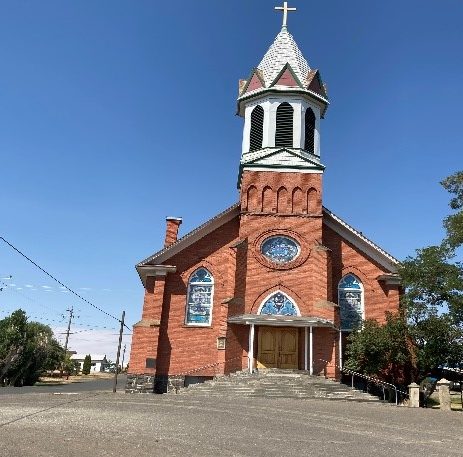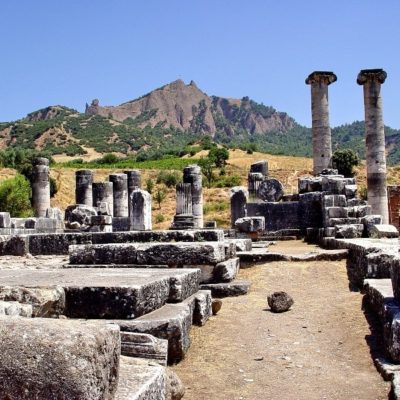Allegheny Wesleyan Methodist Connection

Introduction
The Allegheny Wesleyan Methodist Connection Churches is part of the Conservative Holiness movement, which includes over 100 churches in 17 states and 6 countries. The Allegheny Wesleyan Methodist Connection Churches and the Bible Missionary Church are two of the largest Conservative Holiness denominations. The Allegheny Wesleyan Methodist Connection Churches was originally the Allegheny Conference. They were left-over after the merger of the Wesleyan Methodist Church and the Pilgrim Holiness Church. The Allegheny Wesleyan Methodist Connection Churches is fundamentalist in its organization.
The common thread for the Conservative Interchurch Holiness is still based on obedience to the commandments of the Lord. The Allegheny Wesleyan Methodist Connection Churches addresses sanctification and traditional holiness. They reject and resist contemporary fashions. They reject contemporary Christian music, not just because of the quality of the music, but mostly because of the quality of the lifestyle of the performers. They preach against divorce, the envisioned papal takeover of America, the spread of communism, the immodest dress in the church as well as the jewelry worn in the churches today, and the general conformity to worldliness. Television is believed by the Allegheny Wesleyan Methodist Connection Church to be the culprit that spreads undesirable behavior for both sexes. This thirst for entertainment is believed by them to be seeping into the churches and contaminating believers with its scum.
The Wesleyan Methodist Church, which later becomes basically the Bible Methodist Church, began seceeding from the Methodist Episcopal Church in 1842; then the Allegheny Wesleyan Methodist Connection Churches and the Bible Missionary Church seceded from them. The Allegheny Wesleyan Methodist Connection Churches supports the Allegheny Wesleyan College and the Allegheny Publications which produces the Allegheny Wesleyan Methodist monthly.
History
The Allegheny Wesleyan Methodist Connection Churches adopted the organizations and the doctrines that were instituted by John Wesley which began in 1700. John Wesley was educated at Oxford University in England. He instructed the world with a revived doctrine of assurance of salvation, the practical doctrine of Christian perfection, and Wesleyan Methodism. Methodist societies were established in Maryland, Pennsylvania, and New York by 1768. Wesley sent several ministers to plant Methodism to America. Francis Asbury and Thomas Cokes were two of the most important leaders in the formation of American Methodism.
The Methodist Episcopal Church was established in 1784, under the direction of Francis Asbury. John Wesley felt very strong that the responsibility for the societies lay on the clergy rather than the laity. The American Methodist Episcopal Church grew until the issue of slavery invaded the church.
1830 found a growing of sentiment in the slavery issue. The North was against slavery. The abolitionist movement started within the American Methodist Episcopal Church even though they tried to remain neutral. Eventually abolitionists were barred from membership, censured and even excluded because of their outcry against slavery.
The abolitionists withdrew from the American Methodist Episcopal Church. They formed the Wesleyan Methodist Connection of America Church.
The Wesleyan Methodist Church had many unstable years after World War II. The church was accused of being indifferent toward spiritual values. There was a growing tendency toward an independence of local churches and annual conferences. The General Conference of churches began to strengthen its regulation of both the annual conferences and the local churches and in 1943, endorsed the development of a central supervisory authority to administer the work of the local churches. The Allegheny Wesleyan Methodist Connection Churches were some of the original organizing conferences and opposed the merger between the Free Methodist Churches. Their recommendation was defeated during the 1955 General Conference. The Allegheny Wesleyan Methodist Connection Churches unanimously opposed the merger. They also opposed a merger with the Pilgrim Holiness church that was proposed at the 1963 General conference. The General Conference proposed another merger with the Pilgrim Holiness Church and the Wesleyan Methodist Church in 1966; the Allegheny Wesleyan Methodist Connection Churches were refused to be part of the delegation, allowing the merger to pass by a large vote. The Allegheny Wesleyan Methodist Connection Churches refused to join the merged group. The final settlement between the Conference and the General Church came in 1968 when the Conference accepted the name of the Allegheny Wesleyan Methodist Connection Churches which was originally called the Allegheny Conference.
It was out of this conference where the creation of Bible Methodism was formed. The Inter Church Holiness Convention was created in 1952 and brought together the conservative aspect of the Holiness movement. The period between 1950 and 1960 was a time when Communism was believed to be the predecessor of the antichrist. This was a warning that the return of Jesus Christ was imminent. The National Council of churches and the World Council of Churches were regarded as being the foreshadowing for Communism. The message from the pulpits at this time was that the National Council of churches and the World Council of Churches would soon take over the world. Believers were encouraged to avoid worldliness.
Bible Methodism materialized from this period. There were several concerns leading to the formation of the Bible Methodism. First there was the question of a merger with the Free Methodist Church and the Pilgrim Holiness Church. Secondly, they were concerned over the expanding question of worldliness, the inappropriate dress standards, the watching of television, and wearing of a wedding ring. Thirdly, their concerns were worried about the persistent growth of the General Conference and their authority over the annual conferences.
There was a society formed to preserve the Primitive Wesleyan Methodism and to restore to life the original Wesleyan Methodism, The True Wesleyan and to call the Wesleyan Methodist Church back to its origin. It was in June of 1966 that the society adopted the name Allegheny Wesleyan Methodist Connection Churches which was originally called the Allegheny conference.
The Alabama Bible Methodists at their in 1967 Conference withdrew from the Wesleyan Methodist Church stating the reasons were the wearing of the wedding bands by church members. The second reason given was over television ownership and the viewing of it by ministers and laymen. The third reason for withdrawing was because the modern day trend in the area colleges toward leading the youth to participate in worldly trends. The fourth objection by the church was the requirement to participate with the National Council of Churches. They also opposed centralized government in the General Church of the Wesleyan Methodist Church and the merging with the Pilgrim Holiness Church by the 1966 Wesleyan Methodist General Conference.
Belief
The Official Declaration of Purpose for the Allegheny Wesleyan Methodist Connection Churches is to recognize the past history of the holiness bodies. They wanted to stress the importance of personal holiness and to increase emphasis upon organization, centralization of authority and the workings of church life. The Allegheny Wesleyan Methodist Connection Churches also states their purpose is the spread of Scripture, the second blessing holiness and building up a holy and separated people for the first resurrection.
The Articles of Faith used by the Allegheny Wesleyan Methodist Connection Churches came directly from the 1959 Discipline of the Wesleyan Methodist Church and is unaltered since the 1891 General Conference. They believe that the Atonement of Christ provides for salvation in life. It includes sin as a practice and the sin that is inherited.
The Disciples of the Allegheny Wesleyan Methodist Connection Churches define sanctification as the working of the Holy Spirit by which the child of God is cleansed from all inbred sin through their faith in Jesus Christ.
The Allegheny Wesleyan Methodist Connection Churches stress that all believers must live their lives as a living sacrifice, holy and acceptable to God. This lifestyle will enable Believers receive God’s grace to love the LORD God with all their heart and walk in His holy commandments without blame.
The Allegheny Wesleyan Methodist Connection Churches believe they are set apart from other Christian denominations because they emphasize a personal obedience to God and the commandments of God as they believe is stated in the Bible. They believe their denominations must demonstrate their personal obedience to God by rejecting contemporary entertainment such as television, movies, internet and contemporary music. They believe their dress must be modest along with their hair style.
The Allegheny Wesleyan Methodist Connection Churches believes and teaches the doctrine of entire Sanctification, the second work of grace that will cleanse all Believers from their carnal sinful nature. They believe Baptism is a Sacrament. Baptism is normally done by full water immersion. They do however, accept other forms of Baptism such as sprinkling and they do not criticize any other method.
The Allegheny Wesleyan Methodist Connection Churches believes the Holiness Movement should be dominated by Godly, but uneducated, preachers. Their preachers use everyday language and their personal personal experience as a standard terminology for theological definitions and expression. This terminology is not Biblical in origin and has the tendency to be misunderstood even though it might be Biblically correct.
The Allegheny Wesleyan Methodist Connection Churches maintains the conservative lifestyle with a strong emphasis on obtaining and keeping holiness. Their churches have changed their focal point of home missions and church planting and focused on the mission field. This began a transformation within The Allegheny Wesleyan Methodist Connection Churches, as evangelism within their denominations comes to light.
Cite Article Source
MLA Style Citation:
Holstein, Joanne “Allegheny Wesleyan Methodist Connection: .” Becker Bible Studies Library Jan 2006.<https://guidedbiblestudies.com/?p=2562,>.
APA Style Citation:
Holstein, Joanne (2006, January) “Allegheny Wesleyan Methodist Connection:. ” Becker Bible Studies Library. Retrieved from https://guidedbiblestudies.com/?p=2562,.
Chicago Style Citation:
Holstein, Joanne (2006) “Allegheny Wesleyan Methodist Connection: .” Becker Bible Studies Library (January, https://guidedbiblestudies.com/?p=2562, (accessed).


